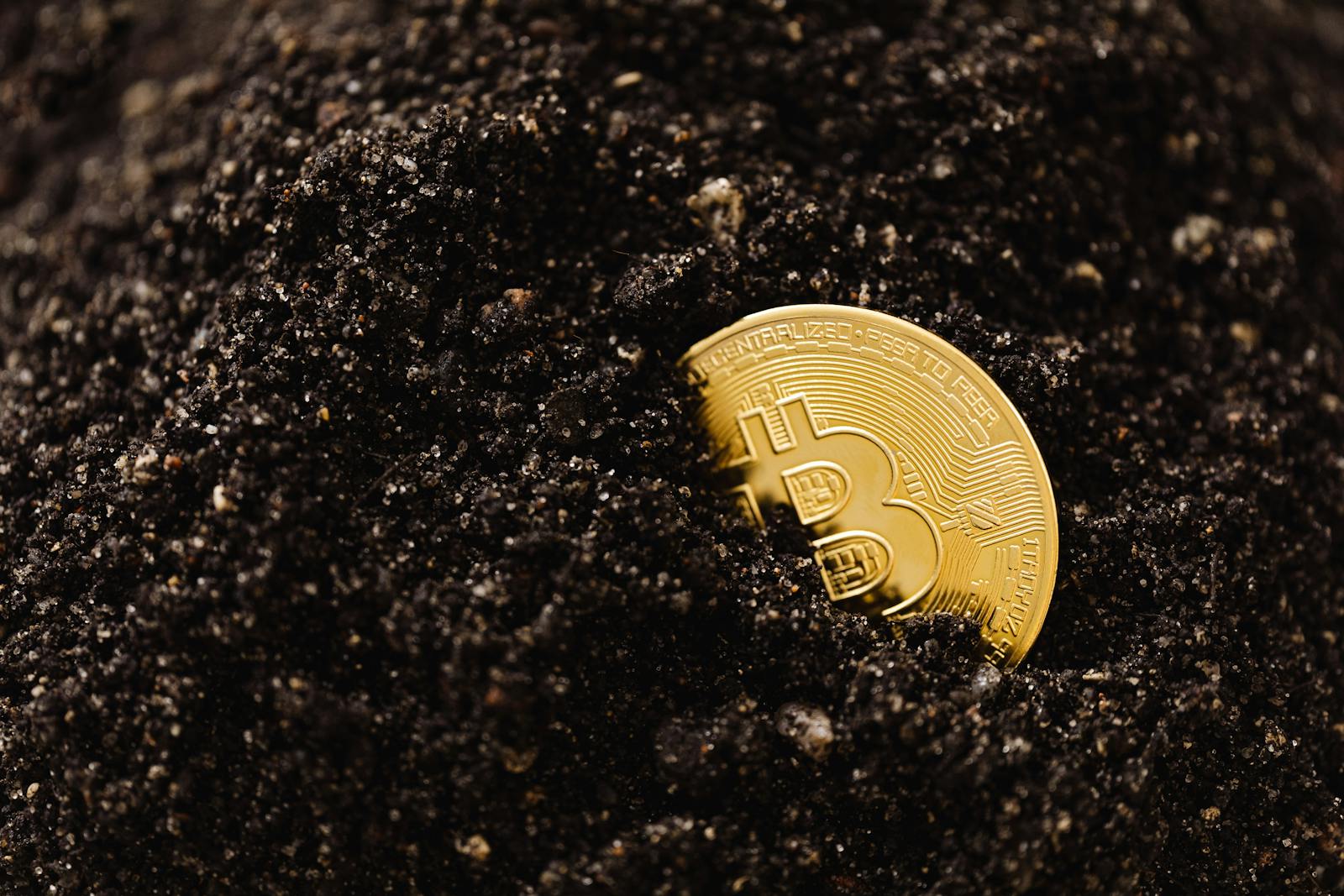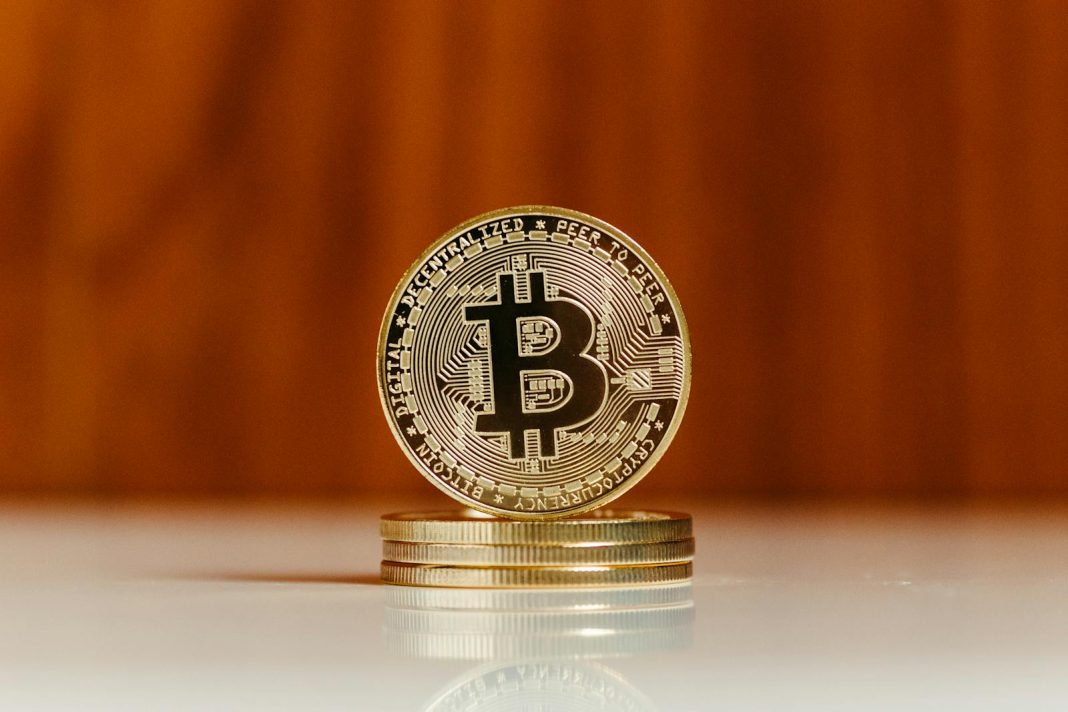Imagine a world where the currency in your wallet is as digital as the phone in your pocket. That’s where Bitcoin, a form of digital currency, comes into play. It’s a revolutionary financial technology that has been gaining traction since its inception in 2009. But what exactly is Bitcoin mining, and why does it matter so much within this new monetary ecosystem?
Brief Overview of Bitcoin Mining and Its Significance in the Digital Currency Ecosystem
Bitcoin mining serves as the backbone of the Bitcoin network. Miners use powerful computers to solve complex mathematical problems, and in doing so, they process transactions and secure the network. This computational process is crucial—it not only introduces new bitcoins into circulation but also reinforces the integrity and chronological order of the blockchain, the ledger that records all transactions. Hence, mining is pivotal for the existence and functioning of Bitcoin as a decentralized currency.
Introduction to the Concept of Environmental Impact in the Context of Cryptocurrency Mining
While the financial benefits and technological advancements of Bitcoin mining are impressive, there’s a growing concern about its environmental impact. Mining consumes a significant amount of electricity, leading to a substantial carbon footprint. With climate change and sustainability at the forefront of global discourse, it’s essential to scrutinize the ecological implications of such an energy-intensive activity. The conversation around the environmental toll of cryptocurrency mining is becoming increasingly important as the industry continues to grow.
Setting the Stage for Understanding the Complexities of Bitcoin Mining’s Environmental Effects
Unearthing the complexities behind the environmental effects of Bitcoin mining is no small feat. As we delve deeper into this topic, we’ll explore how factors like energy consumption, hardware requirements, and the geographical distribution of mining operations intertwine to shape the ecological footprint of this digital gold rush. It’s vital to approach these complexities with nuance and attention to detail, allowing us to grasp the full scale of Bitcoin mining’s environmental impact.
Understanding Bitcoin Mining
In the previous section, we discussed the significance of Bitcoin mining and its potential environmental impact. Now let’s delve deeper into what mining entails. Bitcoin mining is a digital alchemy, transforming electricity into the precious currency of the digital age. But what exactly is this process?

The Computational Process of Bitcoin Mining
Bitcoin miners are like the auditors of the cryptocurrency world. Their job is to verify transactions and in doing so, they compete to solve complex mathematical puzzles. This process involves generating a hash—a unique string of characters—that matches certain criteria. It’s a trial and error task that requires immense computational power. The first miner to solve the puzzle gets to add a block of transactions to the blockchain and is rewarded with newly minted bitcoins. This reward incentivizes the miners to keep the network secure and functional.
However, this isn’t just a taxing mental exercise; it’s also energy-intensive. Each attempt to create a hash consumes electrical energy, and with millions of miners making countless attempts per second, the amount of energy used is substantial. It’s akin to millions of people trying to guess a combination lock, with each attempt powered by electricity.
Proof of Work and Energy Consumption
At the heart of this process lies the Proof of Work (PoW) consensus mechanism. PoW requires miners to prove they have expended significant computational effort, thereby validating transactions and maintaining the network’s integrity. It’s a race, but one that demands not only speed but also stamina—in the form of energy. Since the difficulty of the puzzles adjusts to ensure new blocks are added every 10 minutes on average, the energy required to maintain the network grows as more miners join the fray and hardware becomes more advanced.
This reliance on energy for security has led to Bitcoin’s reputation as a heavy consumer of electricity. To put it into perspective, some estimates suggest that the Bitcoin network consumes more energy annually than entire countries, such as Argentina or the Netherlands. However, these figures can fluctuate, and it’s essential to consider the source and context of such data.
Geographical Distribution of Mining Operations
Where does all this mining take place? The geographical distribution of mining operations is influenced by several factors, including access to cheap electricity, political stability, and regulatory environments. Historically, a significant portion of mining occurred in China due to low energy costs and the availability of manufacturing facilities for mining hardware. However, with recent regulatory changes in China, the mining landscape is shifting.
Nowadays, miners are migrating to places like Kazakhstan, Russia, and the United States, where they can find favorable conditions. In these locales, the source of electricity varies, from coal-fired power plants to hydroelectric dams. The type of energy used directly impacts the environmental footprint of mining. If miners use renewable energy, the carbon footprint is lessened, but if they rely on fossil fuels, the impact is much greater.
Understanding the source of energy is critical when assessing the environmental impact of Bitcoin mining. Miners are incentivized to seek the cheapest power, which can lead to a higher proportion of renewable energy usage in regions where it’s more cost-effective. However, the overall mix of energy sources remains a crucial factor for the sustainability of Bitcoin mining practices.
Environmental Impact Assessment
Delving into the environmental footprint of Bitcoin mining, one cannot help but wonder about its carbon footprint compared to traditional energy usage. Bitcoin mining’s energy consumption has become a hot topic, sparking concerns over its sustainability and long-term effects on our planet. Let’s unpack these concerns by examining current findings and perspectives.
Carbon Footprint and Energy Usage
The term ‘carbon footprint’ refers to the total greenhouse gas emissions caused by an individual, organization, event, or product, expressed as carbon dioxide equivalent. In the realm of Bitcoin mining, the energy-intensive nature of the Proof of Work (PoW) mechanism translates directly into a significant carbon footprint. This is due to the fact that the majority of the world’s energy production still relies heavily on fossil fuels, which are major contributors to greenhouse gas emissions. Studies suggest that the annual carbon emissions from the electricity generated to mine Bitcoin equal the footprint of countries like New Zealand. Comparatively, traditional banking systems and gold mining also have considerable energy footprints, but the decentralized nature of Bitcoin means its energy consumption is more directly observable and thus critiqued.
E-Waste and Environmental Repercussions
Another pressing concern is the e-waste generated by the specialized hardware required for Bitcoin mining. These high-performance machines, known as Application-Specific Integrated Circuits (ASICs), are designed to optimize the mining process. However, they have a limited lifespan and can quickly become obsolete as technology advances and difficulty in mining increases. Consequently, this results in a substantial amount of electronic waste that poses challenges for disposal and recycling. The rapid pace at which hardware becomes outdated exacerbates this issue, leading to a growing pile of e-waste that contributes to toxic build-up in landfills, with harmful effects on soil, water, and air quality.
Long-Term Environmental Consequences
Looking into the future, unchecked Bitcoin mining activities could potentially lead to dire environmental consequences. If the demand for Bitcoin continues to rise without significant changes in energy sourcing or efficiency, the resulting increase in mining activity will likely contribute to greater energy consumption, demanding more from power grids and possibly hindering the progression towards renewable energy targets. Furthermore, the thermal pollution and water use associated with mining operations could have detrimental impacts on local ecosystems, affecting biodiversity and the health of wildlife populations.
In understanding the complexities of Bitcoin mining’s environmental impact, it is crucial to consider these factors not in isolation but as interconnected issues that necessitate comprehensive solutions. The environmental assessment of Bitcoin mining reveals a need for collective action and innovation to ensure that the digital currency’s legacy is not marred by irreversible damage to our planet’s ecosystems.
Factors Influencing Environmental Impact
As we delve deeper into the environmental implications of Bitcoin mining, it’s crucial to consider the factors that could tip the scales towards a more sustainable practice. Chief among these are renewable energy adoption, regulatory policies, and technological innovation. But how exactly do these elements play into the grand scheme of mitigating environmental damage?
Renewable Energy Adoption in Bitcoin Mining
The push for renewable energy sources is akin to a beacon of hope in the stormy debate over Bitcoin’s environmental impact. Switching from fossil fuels to wind, solar, or hydropower could drastically cut down the carbon emissions associated with mining operations. The logic is straightforward: if the electricity that powers mining comes from renewables, the carbon footprint shrinks. This isn’t just a pipe dream—some mining facilities have already begun harnessing these cleaner energy sources, proving that a greener Bitcoin could be on the horizon. The key now is scaling this up, making renewables not just an alternative, but the norm for miners worldwide.

Regulatory Policies and Their Impact
When it comes to shaping behaviors and practices, few things wield as much power as regulations. Governments and international bodies are starting to recognize the urgent need to steer Bitcoin mining onto a more environmentally friendly path. Some regions have implemented policies limiting mining activities or mandating the use of renewable energy. However, the effectiveness of these measures is still up for debate. After all, regulation can only work if it’s enforceable and if it strikes the right balance between environmental concerns and economic interests. It’s a delicate dance, one that requires constant refinement to ensure that policies remain relevant and impactful.
Technological Innovations in Mining
Last but certainly not least are the advancements in technology that could revolutionize Bitcoin mining. We’re talking about innovations that increase the efficiency of mining hardware or even alter the fundamental processes of cryptocurrency validation. While the Proof of Work consensus mechanism is notoriously energy-hungry, there are whispers and wagers on alternatives like Proof of Stake, which could dramatically reduce energy consumption. In addition, improvements in chip design and cooling systems are making mining rigs more efficient and less wasteful. As these technologies mature, they could pave the way for a leaner, greener Bitcoin mining ecosystem.
Each of these factors—renewable energy, regulatory policies, and technological innovation—holds a piece of the puzzle in addressing the environmental challenges posed by Bitcoin mining. They don’t exist in isolation; rather, they intersect and interact in complex ways. Renewable energy adoption can be accelerated by supportive regulations, while technological advancements could be spurred on by both market demands and policy incentives. It’s a multifaceted battle against environmental degradation, one that calls for a collaborative and multi-pronged approach.
Conclusion and Call-to-Action
In wrapping up our discussion, it’s crucial to revisit what we’ve understood about the environmental impact of Bitcoin mining. We’ve seen that this digital gold rush, while innovative, comes with a significant carbon footprint and generates substantial e-waste. The geographical spread of mining operations has led to a patchwork of energy practices, some greener than others. It’s a nuanced issue, with various factors at play, including the energy sources used, the efficiency of the hardware, and the regulatory environment.
Recapitulation of the Key Insights Regarding the Environmental Impact of Bitcoin Mining
The journey through Bitcoin mining’s environmental saga reveals a complex picture. Mining powers the blockchain, but it also consumes vast amounts of electricity—comparable to entire countries in some estimates. This energy consumption translates into a noteworthy carbon footprint, especially where fossil fuels are the primary energy source. Moreover, the specialized hardware required for mining often has a short lifespan, contributing to e-waste. Awareness of these facts is the first step in addressing the environmental concerns associated with Bitcoin mining.
Encouragement for Increased Awareness and Dialogue Surrounding Sustainable Practices in Cryptocurrency Mining
Understanding the problem is just the beginning. We need to talk more about sustainable practices within the community. Forums, social media platforms, and industry conferences are ideal places for these conversations. By bringing different voices together—from environmentalists to tech enthusiasts—we can broaden our perspective on the issue. And it’s not just talk; these dialogues can lead to actionable ideas that balance economic interests with ecological responsibility.
Call-to-Action for Stakeholders to Collaborate Towards Developing Environmentally Conscious Solutions for the Future of Bitcoin Mining
Finally, the path forward calls for collaboration. Miners, developers, investors, and policymakers must unite to forge a more sustainable path for Bitcoin mining. Renewable energy adoption is one promising avenue, potentially reducing the carbon footprint of mining operations. Innovations in technology could also lead to less energy-intensive consensus mechanisms or more durable mining rigs. Regulations can guide the industry towards better practices, but they need to be thoughtfully crafted, with input from diverse stakeholders. We all play a part in shaping the sustainable future of cryptocurrency.
To those involved in the world of Bitcoin mining, consider this a call to action. Can you shift towards renewable energy sources? Are there ways to make your mining hardware last longer? What can you do to influence positive change in yourindustry? Start by educating yourself and others about the environmental impact of Bitcoin mining. Engage in discussions and share your ideas for sustainable practices. Collaborate with stakeholders to develop solutions that balance economic growth with ecological responsibility. Together, we can shape a more sustainable future for cryptocurrency mining.


